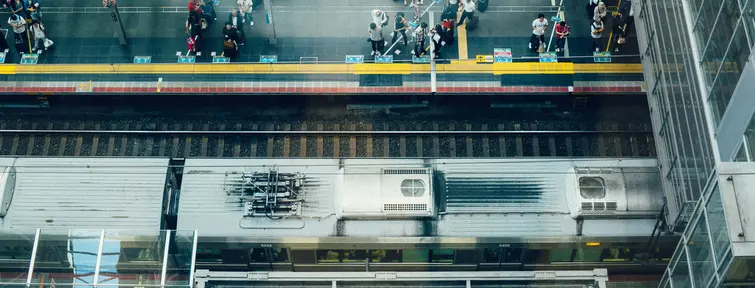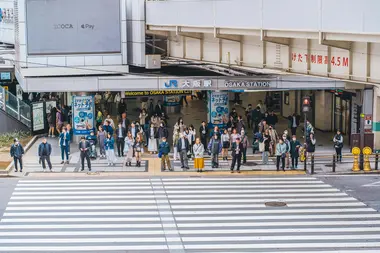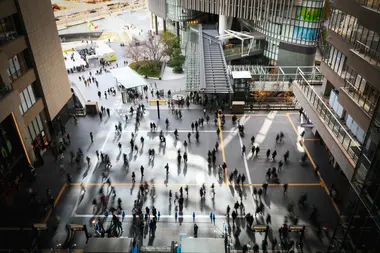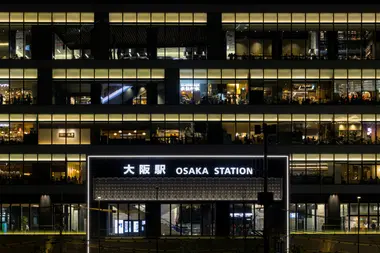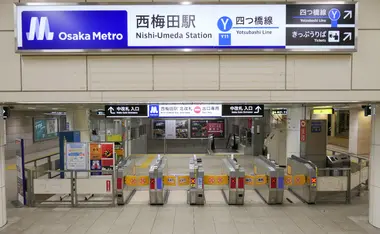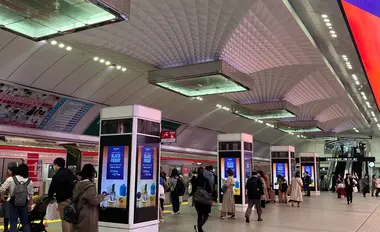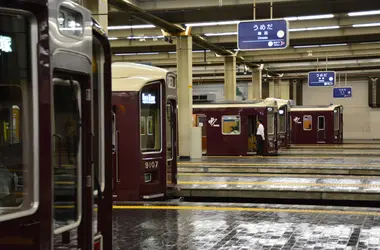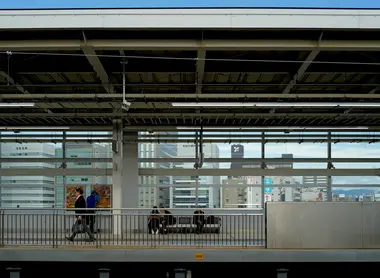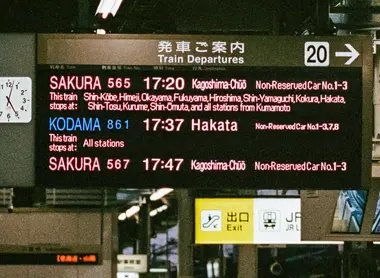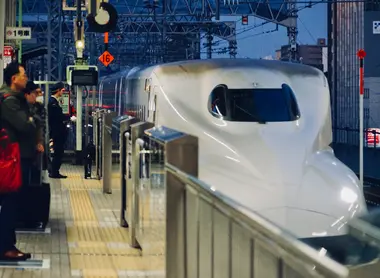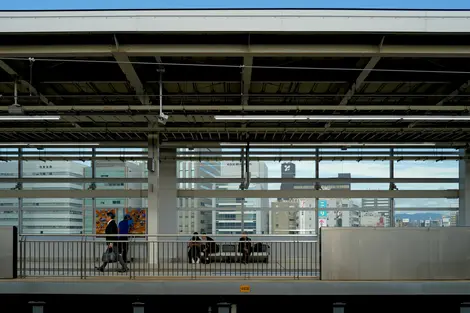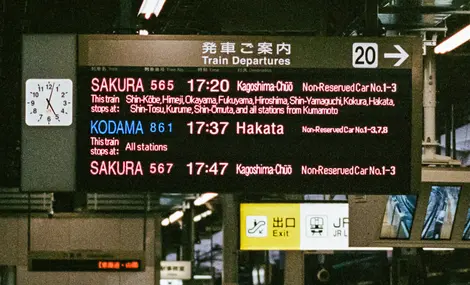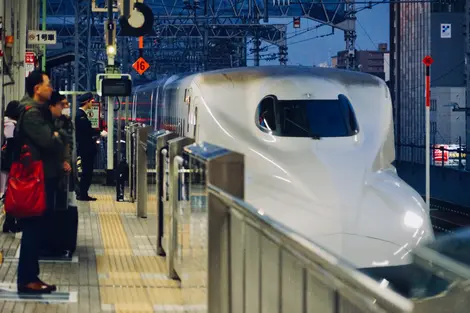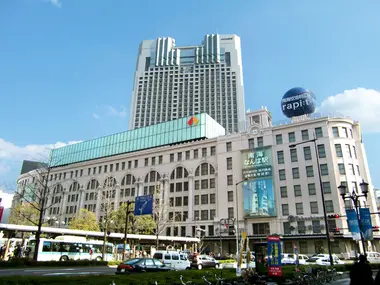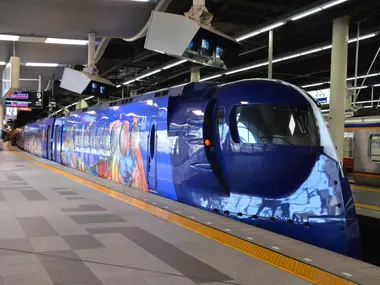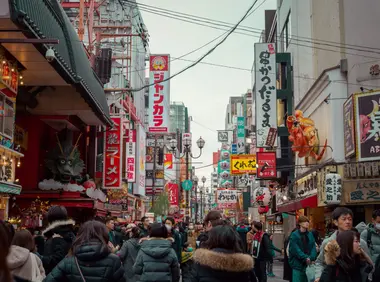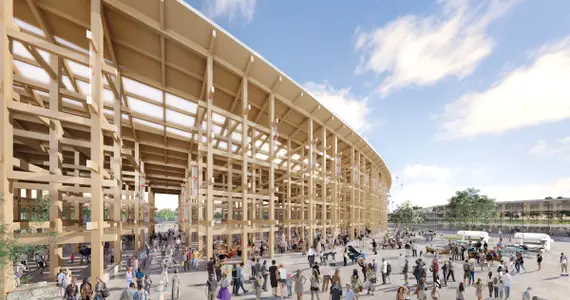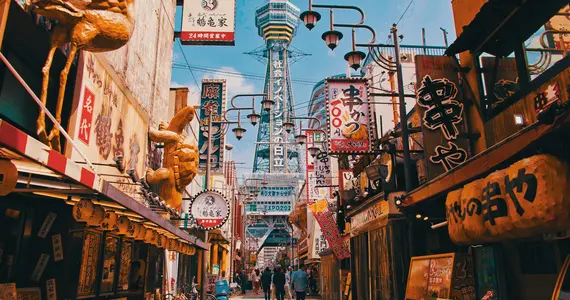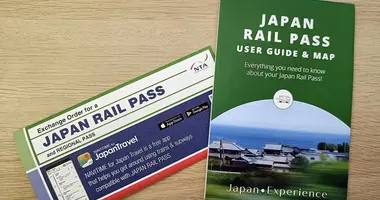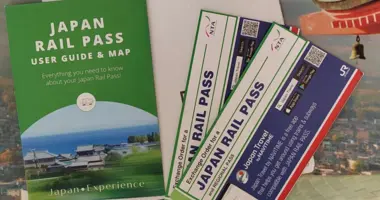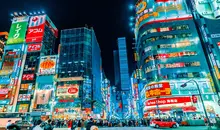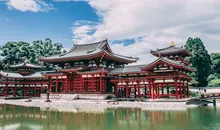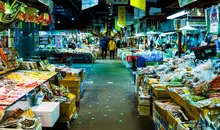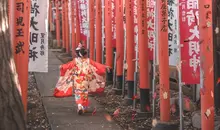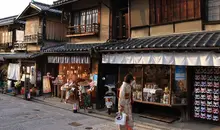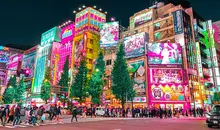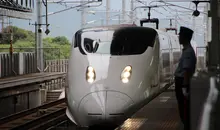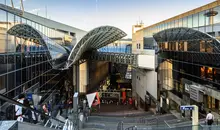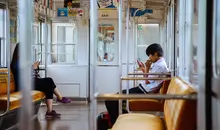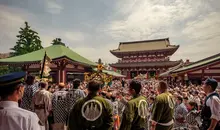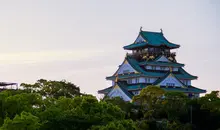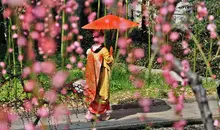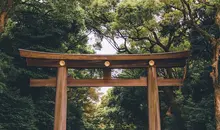Our guide to Osaka's main stations
- Published on : 30/01/2025
- by : Lucie G.
- Youtube
Umeda, Namba, Osaka-Umeda, Shin-Osaka... Here's a short guide to the stations you're sure to come across on your way to Osaka!
Osaka, a city that needs no introduction, benefits from an extremely well-developed transport network. If your journey takes you to Japan's third-largest city, this information will help you find your way around its main stations without difficulty. Indeed, in the same place, you'll find several stations with slightly different names, as each private train company has its own station. Osaka is very well-connected to the rest of Kansai, making it a central starting point for all your train journeys during your stay in Japan.
Here's a summary of the stations covered here:
Osaka Station and Umeda Station → JR regional lines and other private lines (Hankyu, Hanshin, Osaka metro)
Shin-Osaka Station → Shinkansen lines
Namba Station → JR, Nankai, Kintetsu, Hanshin lines
Yumeshima Station → World Expo 2025 station
Osaka Station and Umeda Station
Although they don't have the same name, these two stations are in exactly the same location. Osaka Station is the fourth-most-traveled station in the world and the first in western Japan, so you're sure to pass through it on your journey. It is served mainly by JR lines and subways. Here are the main lines you're sure to come across:
JR Kobe Line (To Kobe and suburbs)
JR Kyoto Line (To Kyoto and its suburbs)
JR Fukuchiyama Line (Suburbs of Kyoto and Kobe)
JR Tokaido Main Line (Tokyo to Kobe via local trains)
JR Osaka Higashi Line (To the east of Osaka)
Osaka Loop Line (equivalent to Tokyo's Yamanote, it circles the city of Osaka)
Within the station is Osaka Station City, a shopping mall complex with hundreds of stores and restaurants, popular with the Japanese during the day and at weekends.
Umeda, the business and shopping district, is located right next to Osaka station. Although it's known by different names — Umeda, Nishi-Umeda, Higashi-Umeda or Osaka-Umeda — all these stations serve the same place! These names differ only according to the line they serve, but they are all connected. This is particularly true of the huge underground complex, which is packed with shopping arcades and entrances to shopping centers such as Daimaru, Hankyu Department Store and Hanshin Department Store. This station can quickly become quite a maze, so try your best to follow the signs indicating the lines. In the meantime, here's a quick look at the lines you'll find under each name:
- Umeda: Misudoji Line (Osaka metro) serving the city's main stops (Tennoji, Namba, Shinsaibashi, Honmachi...).
- Nishi-Umeda: Yotsubashi Line (Osaka metro), from north to south Osaka.
- Higashi-Umeda: Tanimachi Line (Osaka metro) passing through the central district of Tanimachi and the districts of Tennoji and Shinsekai.
- Osaka-Umeda: The Hanshin and Hankyu lines provide connections to the cities and suburbs of Kobe and Kyoto.
Tips :
- Use applications like Japan Travel by Nativime or Google Maps to find your way around more easily!
- Take advantage of Osaka's network of subway lines with the Osaka Subway Pass, which also allows you to take city buses.
Shin Osaka Station
As the suffix Shin indicates, Shin-Osaka station is served especially by the Tokaido Shinkansen (to Tokyo) and the Sanyo Shinkansen (to Fukuoka via Hiroshima). Built in 1964, it is Japan's first station specially designed to accommodate Shinkansen trains arriving from Tokyo. To reach it, you'll find the Midosuji subway line, and JR lines from Kyoto, Kobe, Fukuchiyama and Osaka Higashi. Several intercity express trains also stop at Shin Osaka, including the Supa Hakuto train to Tottori and the Haruka train to Kansai airport.
Namba Station
You'll probably pass through Namba on your way to Nara, thanks to the Kintetsu or JR Yamatoji, which reach the city in around 50 minutes. Note that, similar to Umeda, there are several Namba stations (JR Namba, Osaka-Namba, Nankai Namba, Namba), but don't worry, they're all next to each other and connected by underground corridors.
- From JR Namba station, you can take the JR Yamatoji line to Nara, the Osaka Loop Line around the city, and the Haruka Express to Kansai airport.
- Osaka-Namba station is served by the Kintetsu line and the Hanshin line, which runs to Nara and Kobe.
- Nankai Namba station, as its name suggests, is served by Nankai trains via the Nankai Main Line and the Nankai-Koya Line, which passes near Mount Koya.
- Namba subway station (via Yotsubashi, Sennichimae, Midosuji) is closest to the famous Dotonbori street and Nipponbashi bridge. Many restaurants, karaoke and entertainment venues can be found in the area, making it the preferred place for many Japanese to go out with friends.
Yumeshima: the World Expo station
Inaugurated in January 2025, like the rest of the Chuo Line extension, Yumeshima station (C09) is located on the artificial island where the Osaka World Expo 2025 will be held! The brand-new station is the eastern terminus of the Chuo Line.
You can reach the Chuo Line at Honmachi via the Midosuji, which passes through all Osaka's major stations (Umeda, Namba.., Shin Osaka.) or the Yotsubashi and at Kujo via the Hanshin, if you're coming from Kobe.
Get your tickets for Expo 2025 !
Going further:
Another line that hasn't been mentioned here, but that you're likely to come across, is the Keihan Line. The most central station in Osaka where you can take it is Yodoyabashi, where the Midosuji subway line also runs. You can also hop on at Temmabashi Station, where there's a connection to the Tanimachi Line. The Keihan's busiest stations lead to Uji, Kyoto and its center, and as far as Lake Biwa. What's more, the Keihan is one of the few lines whose trains run until 1 a.m. and start again at around 5 a.m., making it perfect for a day trip. So it's perfect for a late-night day trip to Osaka! What's more, it passes through Demachiyanagi station, where many Japanese stop to enjoy the many activities on offer in the surrounding area! It could be a new place to discover!
